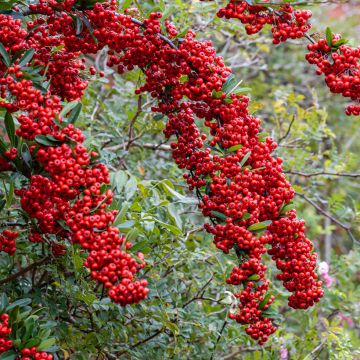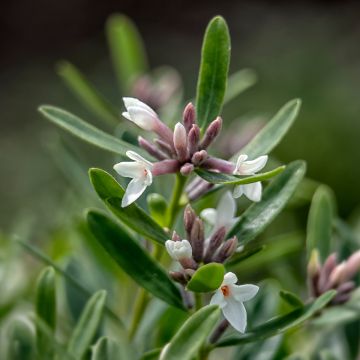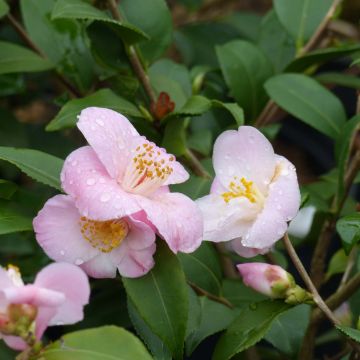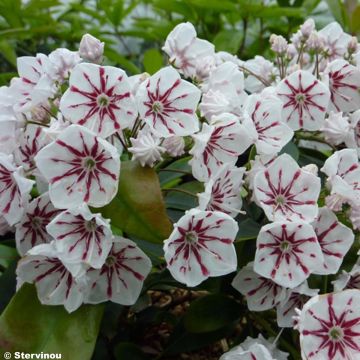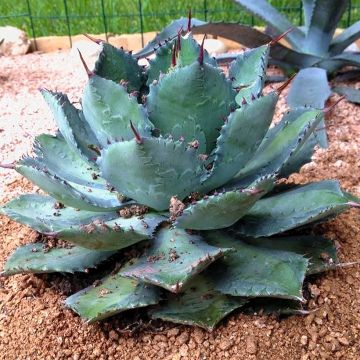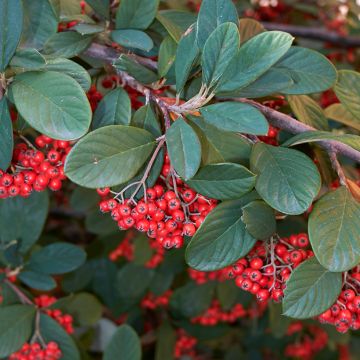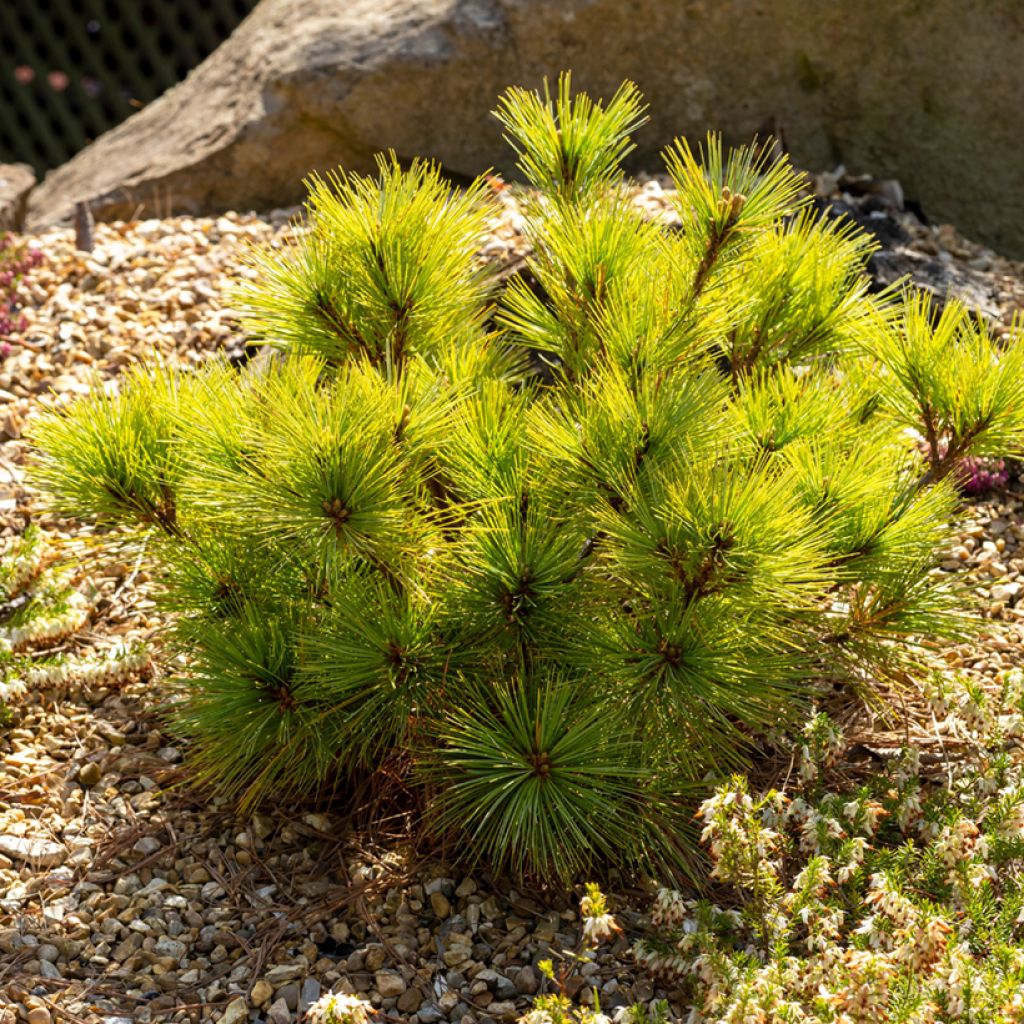

Pinus strobus Radiata - Eastern White Pine
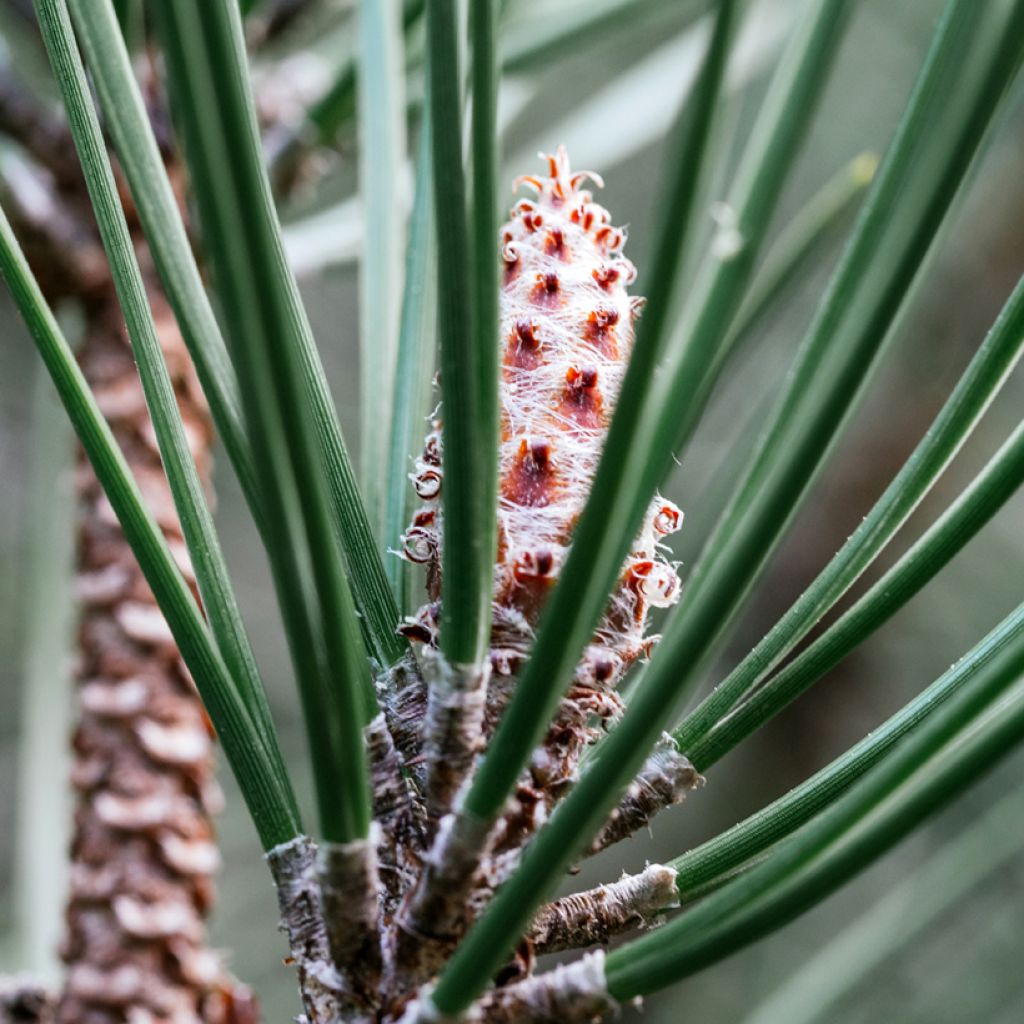

Pinus strobus Radiata - Eastern White Pine
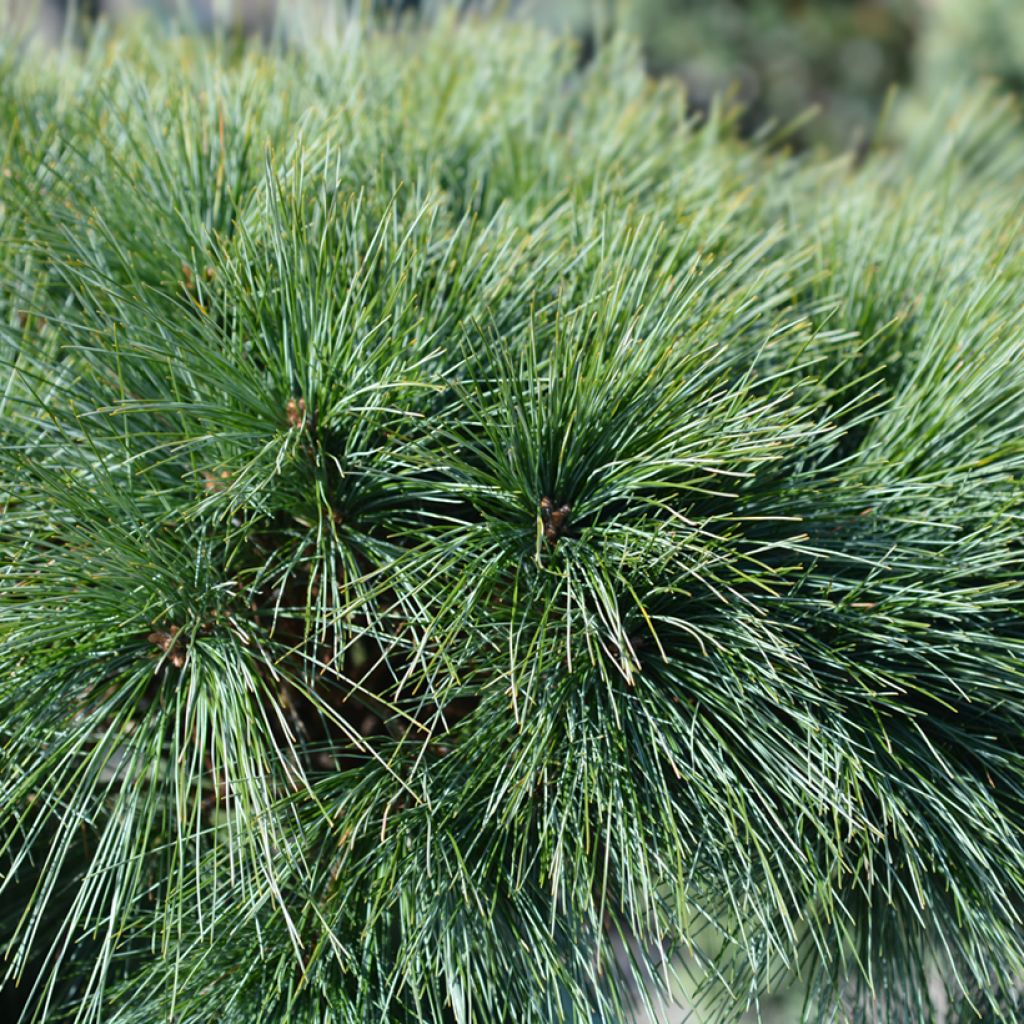

Pinus strobus Radiata - Eastern White Pine
View more pictures
Hide images
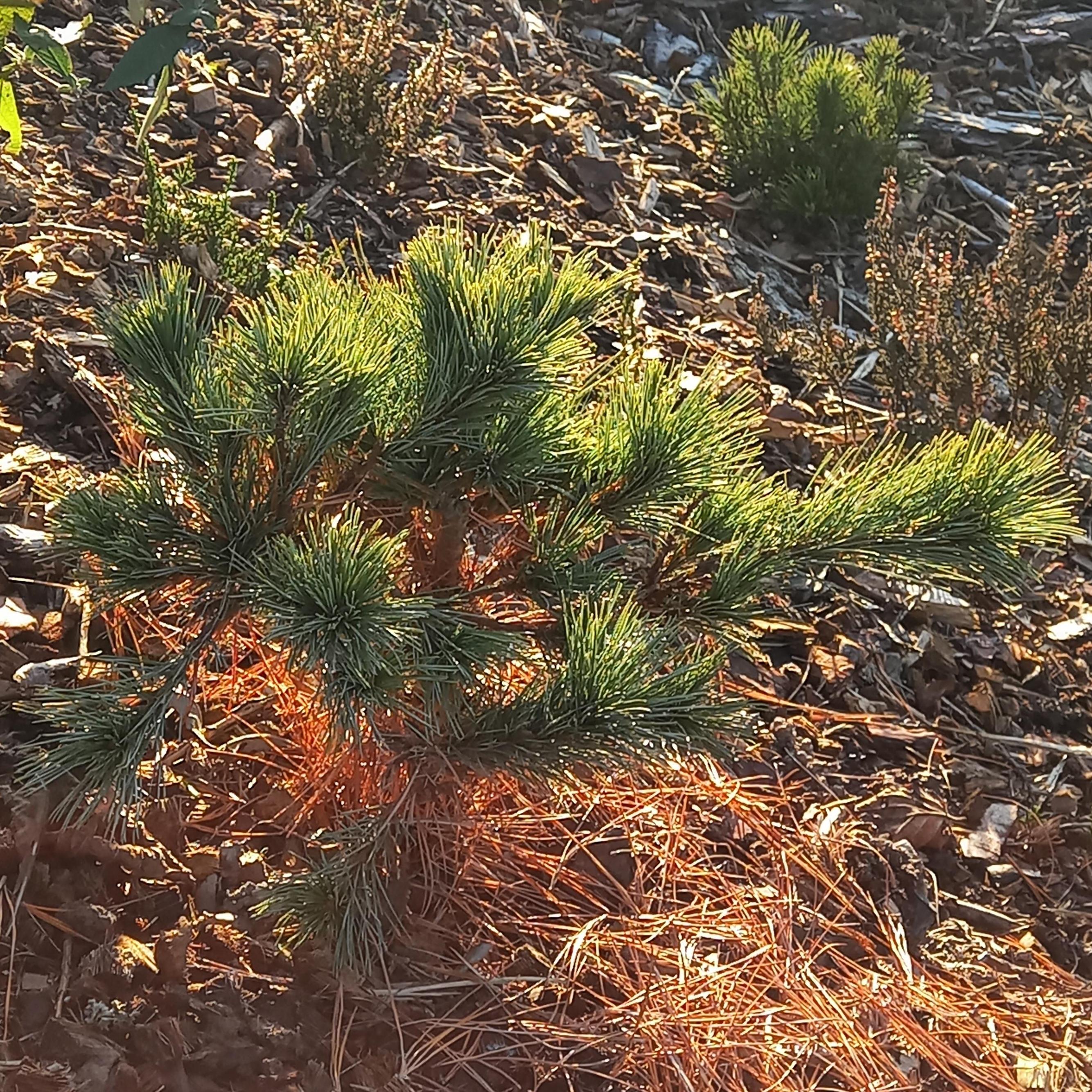
Nicolas C.

Pinus strobus radiata purchased in June 2025, photo taken in December 2025
Nicolas C. • 35 FR
Pinus strobus Radiata - Eastern White Pine
Pinus strobus Radiata
Eastern White Pine, Weymouth Pine, Northern White Pine
Lovely miniature pine with a rounded habit. Fine, long, and flexible blue-green needles. It suffered from heat stress when planted in June but recovered very well by September with regular care. I hope it will grow quickly.
Nico, 26/11/2025
Special offer!
Receive a €20 voucher for any order over €90 (excluding delivery costs, credit notes, and plastic-free options)!
1- Add your favorite plants to your cart.
2- Once you have reached €90, confirm your order (you can even choose the delivery date!).
3- As soon as your order is shipped, you will receive an email containing your voucher code, valid for 3 months (90 days).
Your voucher is unique and can only be used once, for any order with a minimum value of €20, excluding delivery costs.
Can be combined with other current offers, non-divisible and non-refundable.
Home or relay delivery (depending on size and destination)
Schedule delivery date,
and select date in basket
This plant carries a 24 months recovery warranty
More information
We guarantee the quality of our plants for a full growing cycle, and will replace at our expense any plant that fails to recover under normal climatic and planting conditions.

Would this plant suit my garden?
Set up your Plantfit profile →
Description
Pinus strobus 'Radiata' is a dwarf form of the Weymouth pine, which owes its success in large part to the delicacy of its large acute needles with bluish reflections, thin and soft to the touch. Its bushy and flexible habit takes on cushion-like shapes, and its dense, sometimes irregular vegetation always gives it a compact appearance. It bears elongated and pendulous cones, greyish-brown, which persist for a long time on the bush. Its moderate growth and reduced size allow it to thrive in all gardens, even the smallest ones, from large embankments to rocky areas, but also in a flowerbed or a large container on the terrace. It is a very hardy variety, not very demanding in well-drained, not too chalky soil, and resistant to drought once established. It thrives in full sun but also in partial shade.
Pinus strobus, also known as white pine, Weymouth pine or Lord's pine, is a conifer of the pine family, native to eastern North America, as far as Newfoundland Island in Canada. This king of the forest is a monumental tree, a gigantic pyramidal Christmas tree reaching 90m (295ft) in height in its natural environment, but currently barely exceeding 45m (148ft) in height due to the destruction of its habitat and extensive exploitation. It is a very hardy species, often planted for reforestation in forests, or as an ornamental tree in large parks. The bark of this bush is smooth, greenish-grey on young specimens, becoming greyish-brown and fissured over time. The lower part of the tree, when mature, shows a whitened bark, hence the vernacular name 'white pine'.
The 'Radiata' variety, favoured by gardeners, is derived from this species. It is distinguished by its reduced size, its rounded bushy habit, more or less variable, and its magnificent green-blue foliage. Its growth is slow, so that at maturity, it does not exceed 1.75m (6ft) in all directions, even though it is often wider than it is tall. Its branches are densely covered with shiny, thin, soft needles, measuring 7 to 12cm (3 to 5in) in length. They are grouped in fives and arranged in tufts, radially around the branches. Their lower surface has two bands of stomata (plant respiratory cells) that give them bluish to silvery reflections. 'Radiata' bears cylindrical and elongated cones that are quite decorative.
The Weymouth pine 'Radiata' is a particularly attractive variety, but also a conifer with excellent health. It will find its place in all gardens, even the smallest ones, as it is undemanding and adapts to a wide variety of soils, except for very chalky soils, as well as to many climates. In small spaces, it will look good as a standalone specimen and will elegantly enhance a rockery or a flowerbed. In a large container, it will make a magnificent focal point that will enhance a balcony or terrace. It goes well with large stones, the geometric lines of swimming pools, and masonry works. It can be associated with complementary grasses or with prostrate (Juniperus horizontalis 'Blue Chip'), globose (Picea abies 'Little Gem'), or columnar (Juniperus communis 'Sentinel') dwarf conifers. The true graphic qualities of conifers naturally impose themselves in the design of a contemporary garden, which prefers the aesthetics of shapes, silhouettes, and textures to the dance of flowering. These plants, with their reassuring permanence, structurally define a flowerbed, mark pathways, and line terraces, easily replacing the strong presence of trimmed boxwood or holly. The key is to play with volumes and colours.
Report an error about the product description
Pinus strobus Radiata - Eastern White Pine in pictures
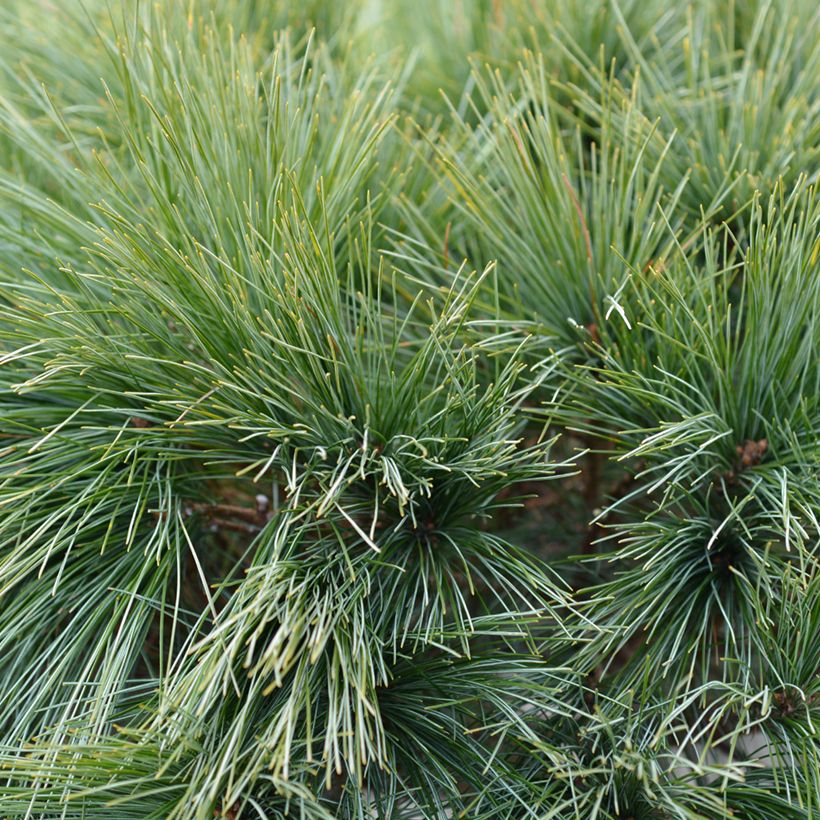

Plant habit
Flowering
Foliage
Botanical data
Pinus
strobus
Radiata
Pinaceae
Eastern White Pine, Weymouth Pine, Northern White Pine
Cultivar or hybrid
Planting and care
Pinus strobus 'Radiata' is planted from September to November and from February to June in ordinary but deep soil, even clayey, acidic or slightly chalky, but well-drained. It prefers loose and light, sandy or loamy soils, with low limestone content. Choose a sunny or partially shaded location in a warm climate. Soak the root balls well before planting. Add organic amendment at planting and water thoroughly for the first three years, and during extended periods of drought. Apply a special conifer fertilizer every year in April and cultivate the soil in summer. This very hardy conifer (up to -40°C (1°F) at least) is not afraid of wind, but it fears waterlogged soils in winter and atmospheric pollution. Pruning is not necessary. However, to accentuate the compact habit of this bush, it may be possible to carry out bud pruning in spring and shorten to a maximum of 2/3 of their length the shoots of the year that are considered unsightly.
Planting period
Intended location
Care
-
, onOrder confirmed
Reply from on Promesse de fleurs
Similar products
Haven't found what you were looking for?
Hardiness is the lowest winter temperature a plant can endure without suffering serious damage or even dying. However, hardiness is affected by location (a sheltered area, such as a patio), protection (winter cover) and soil type (hardiness is improved by well-drained soil).

Photo Sharing Terms & Conditions
In order to encourage gardeners to interact and share their experiences, Promesse de fleurs offers various media enabling content to be uploaded onto its Site - in particular via the ‘Photo sharing’ module.
The User agrees to refrain from:
- Posting any content that is illegal, prejudicial, insulting, racist, inciteful to hatred, revisionist, contrary to public decency, that infringes on privacy or on the privacy rights of third parties, in particular the publicity rights of persons and goods, intellectual property rights, or the right to privacy.
- Submitting content on behalf of a third party;
- Impersonate the identity of a third party and/or publish any personal information about a third party;
In general, the User undertakes to refrain from any unethical behaviour.
All Content (in particular text, comments, files, images, photos, videos, creative works, etc.), which may be subject to property or intellectual property rights, image or other private rights, shall remain the property of the User, subject to the limited rights granted by the terms of the licence granted by Promesse de fleurs as stated below. Users are at liberty to publish or not to publish such Content on the Site, notably via the ‘Photo Sharing’ facility, and accept that this Content shall be made public and freely accessible, notably on the Internet.
Users further acknowledge, undertake to have ,and guarantee that they hold all necessary rights and permissions to publish such material on the Site, in particular with regard to the legislation in force pertaining to any privacy, property, intellectual property, image, or contractual rights, or rights of any other nature. By publishing such Content on the Site, Users acknowledge accepting full liability as publishers of the Content within the meaning of the law, and grant Promesse de fleurs, free of charge, an inclusive, worldwide licence for the said Content for the entire duration of its publication, including all reproduction, representation, up/downloading, displaying, performing, transmission, and storage rights.
Users also grant permission for their name to be linked to the Content and accept that this link may not always be made available.
By engaging in posting material, Users consent to their Content becoming automatically accessible on the Internet, in particular on other sites and/or blogs and/or web pages of the Promesse de fleurs site, including in particular social pages and the Promesse de fleurs catalogue.
Users may secure the removal of entrusted content free of charge by issuing a simple request via our contact form.
The flowering period indicated on our website applies to countries and regions located in USDA zone 8 (France, the United Kingdom, Ireland, the Netherlands, etc.)
It will vary according to where you live:
- In zones 9 to 10 (Italy, Spain, Greece, etc.), flowering will occur about 2 to 4 weeks earlier.
- In zones 6 to 7 (Germany, Poland, Slovenia, and lower mountainous regions), flowering will be delayed by 2 to 3 weeks.
- In zone 5 (Central Europe, Scandinavia), blooming will be delayed by 3 to 5 weeks.
In temperate climates, pruning of spring-flowering shrubs (forsythia, spireas, etc.) should be done just after flowering.
Pruning of summer-flowering shrubs (Indian Lilac, Perovskia, etc.) can be done in winter or spring.
In cold regions as well as with frost-sensitive plants, avoid pruning too early when severe frosts may still occur.
The planting period indicated on our website applies to countries and regions located in USDA zone 8 (France, United Kingdom, Ireland, Netherlands).
It will vary according to where you live:
- In Mediterranean zones (Marseille, Madrid, Milan, etc.), autumn and winter are the best planting periods.
- In continental zones (Strasbourg, Munich, Vienna, etc.), delay planting by 2 to 3 weeks in spring and bring it forward by 2 to 4 weeks in autumn.
- In mountainous regions (the Alps, Pyrenees, Carpathians, etc.), it is best to plant in late spring (May-June) or late summer (August-September).
The harvesting period indicated on our website applies to countries and regions in USDA zone 8 (France, England, Ireland, the Netherlands).
In colder areas (Scandinavia, Poland, Austria...) fruit and vegetable harvests are likely to be delayed by 3-4 weeks.
In warmer areas (Italy, Spain, Greece, etc.), harvesting will probably take place earlier, depending on weather conditions.
The sowing periods indicated on our website apply to countries and regions within USDA Zone 8 (France, UK, Ireland, Netherlands).
In colder areas (Scandinavia, Poland, Austria...), delay any outdoor sowing by 3-4 weeks, or sow under glass.
In warmer climes (Italy, Spain, Greece, etc.), bring outdoor sowing forward by a few weeks.

































